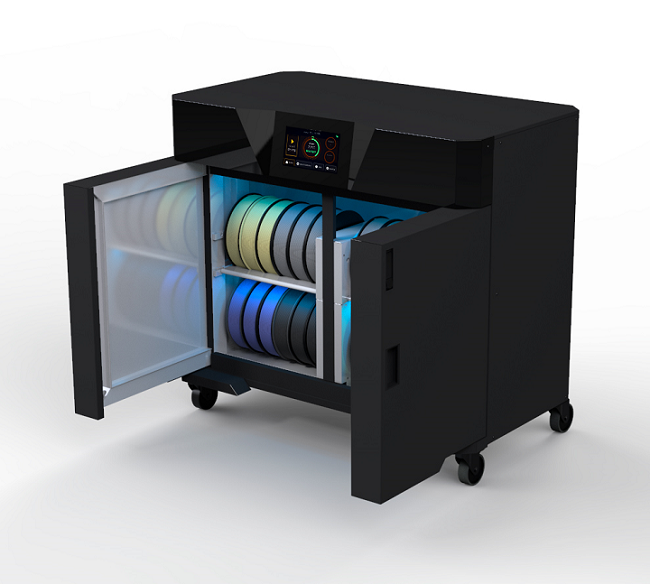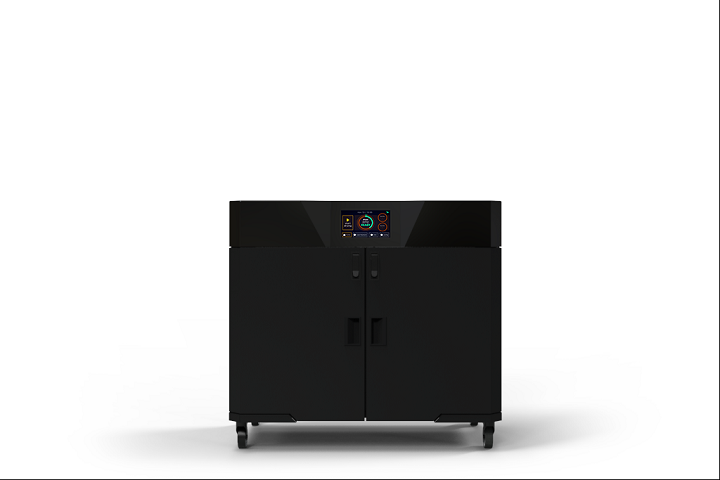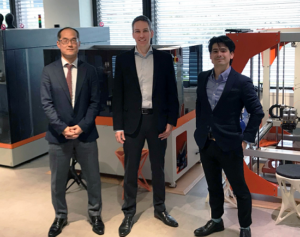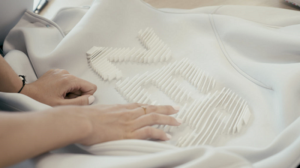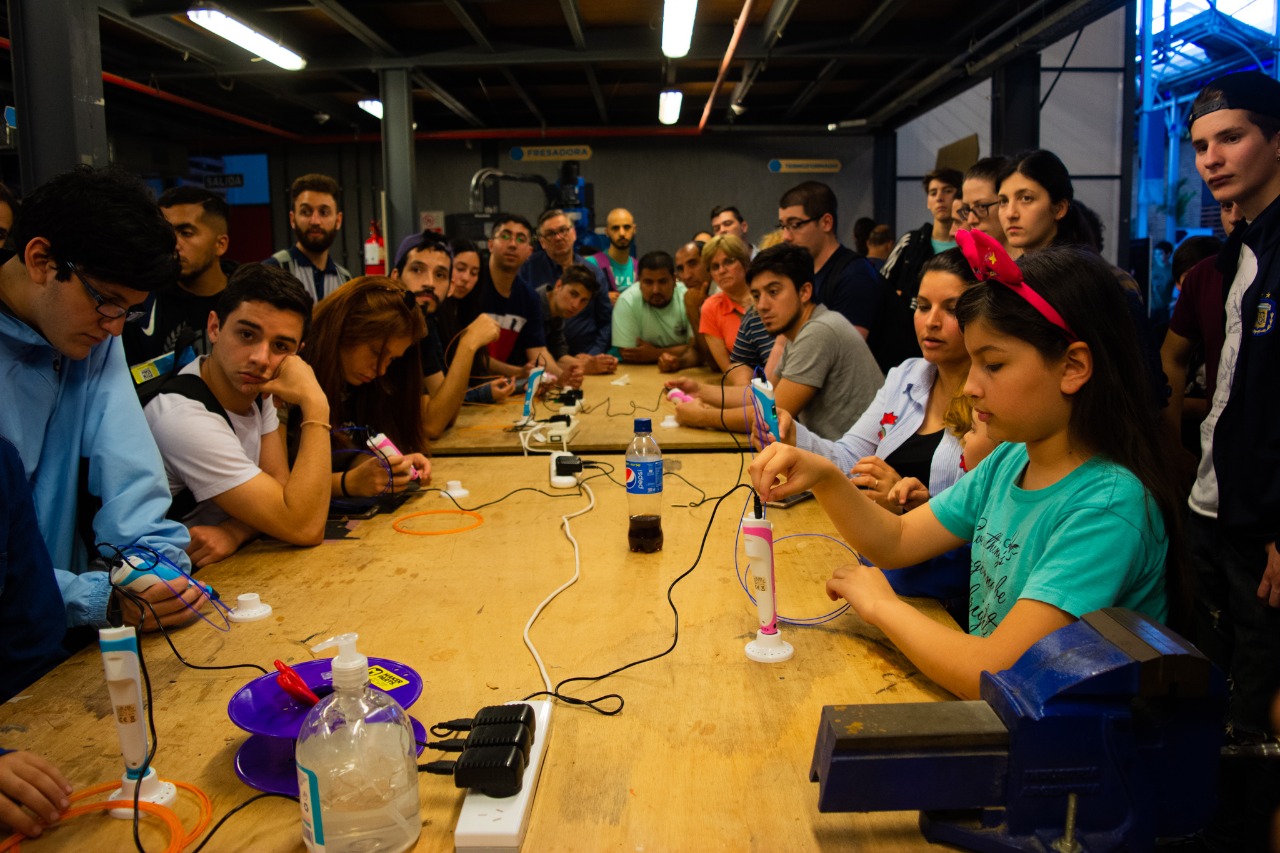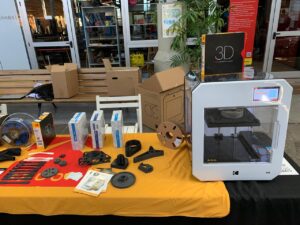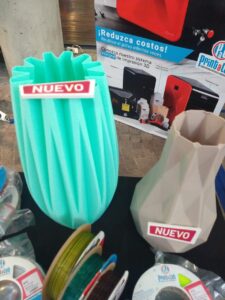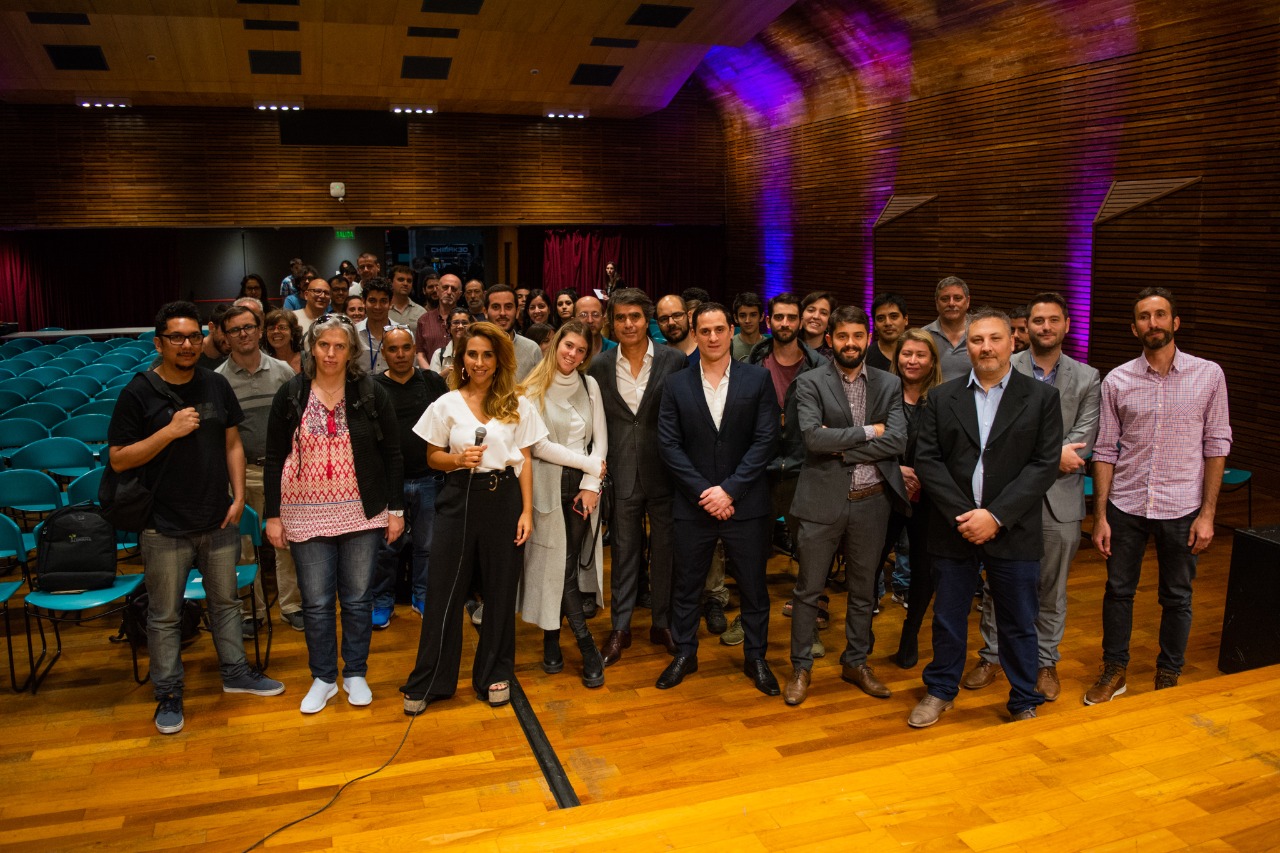3D Printing Industry News Sliced: BCN3D, BEAMIT, Thor3D, Ricoh, Senvol, Voxeljet
Smart International Introducing Multimaterial Dryer for 3D Printing Filaments
Moisture is not your friend when it comes to 3D printer filament, as humidity can cause weakened material, which then leads to fragile prints, poor surface finish and adhesion, and also degradation. The filament can break in your printer or parts can warp or become very brittle. If you just leave a PLA filament on your printer it will degrade in days, nylon in hours. That’s why it’s so important to keep your material dry before you use it.
Smart International, the 3D printing licensee for KODAK, just announced the launch of a new system that they say will help dry 3D filaments and materials up to ten times faster than other systems – the Smart3D Multimaterial Dryer.
“While typical drying cycles take between 8 – 48 hours and use heat which does not remove moisture completely, the Smart 3D MultiMaterial Dryer uses a hybrid technology to dry filament in as little as an hour,” Helen Blesky, the Marketing Manager for KODAK 3D Printing’s Global Brand Licensee Smart International, told 3DPrint.com.
The 892 x 500 x 825 mm machine, developed for the FFF 3D printing market, offers efficient 3D filament drying through the use of hybrid technology, and, as a Smart International press release states, integrates industrial drying “at end-user level.” By ensuring moisture-free filament, users of the Smart3D Multimaterial Dryer can achieve consistent and repeatable 3D printing results.
Most current solutions that work to combat moisture and humidity will dry filament through the use of heat, but this really isn’t the best solution to the problem. For starters, heat won’t even necessarily remove 100% of the humidity from filament, and it doesn’t allow different materials to dry at the same time. In addition, it can affect both the chemical and physical characteristics of the materials it’s being used to treat by up to several degrees, and it can take between 8-48 hours to run a full cycle.
 The new Smart3D Multimaterial Dryer uses a hybrid technology that can ensure dry filament in as little as one hour – up to ten times faster than current methods of drying. With an internal storage capacity of 733 x 250 x 506 mm – equaling up to 30 spools able to be dried and stored inside – the system is compatible with any 3D printing filament with a spool diameter of up to 500 mm.
The new Smart3D Multimaterial Dryer uses a hybrid technology that can ensure dry filament in as little as one hour – up to ten times faster than current methods of drying. With an internal storage capacity of 733 x 250 x 506 mm – equaling up to 30 spools able to be dried and stored inside – the system is compatible with any 3D printing filament with a spool diameter of up to 500 mm.
“This product is the natural result of our customers’ requests to complete the low moisture chain and guarantee repeatable prints. When we launched the Kodak filament line featuring low moisture and vacuum-sealed packaging, and the enclosed KODAK Portrait 3D Printer with its filament protection cases, humidity was not widely perceived as FFF 3D printing’s silent enemy as it begins to be understood now,” stated Demian Gawanski, CCO of Smart International. “Since then, with chemical giants strongly stepping onto our industry and broadening its range of applications, it hurts our eyes to see high performance filament go to waste, bake in ovens or centrifugate in salad spinners. We feel this completes the most comprehensive professional ecosystem on the market and inaugurates our new year of exciting Industry 4.0 compliant releases targeted at exacting customers.”
The system, with both Ethernet and USB connectivity, recognizes spools through RFID tags, and an intuitive 7″ touchscreen records all the ambient conditions inside the drying chamber. Each filament can be scanned as it’s stored, so it’s very easy to keep track of your stock of dried materials.
When it comes to energy consumption, the Smart3D Multimaterial Dryer is very efficient, as it uses up to ten times less energy than other filament dryers on the market; this allows users to process more material in a shorter amount of time. Speaking of materials, the new system’s drying process makes it possible to dry several different materials, such as TPU, PVA, and Nylon, at the same time.
This latest edition to the KODAK 3D Printing Ecosystem comes with a discount of 10% off the $4299 MSRP for pre-order customers throughout the month of February, or until the limited stock of systems runs out. Visit local resellers for availability; pre-ordered machines will ship out this April.
Discuss this story and other 3D printing topics at 3DPrintBoard.com or share your thoughts in the Facebook comments below.
[Images provided by Smart International]
The post Smart International Introducing Multimaterial Dryer for 3D Printing Filaments appeared first on 3DPrint.com | The Voice of 3D Printing / Additive Manufacturing.
3D Printing Industry News Sliced: Essentium, Tommy Hilfiger, Prodways, Arkema, Smart International
3D Printing News Briefs: January 16, 2020
In today’s 3D Printing News Briefs, we’ve got a little business news, followed by stories about materials, and finally ending with some 3D printed fashion. PostProcess Technologies is expanding in Japan with a new partnership. Smart International has launched a material partnership program, and CRP Technology is introducing a new Windform material. Finally, a Spanish fashion brand is using BCN3D’s technology to make some of its clothing.
PostProcess Technologies Enters Asian Market with New Partnership
Automated post-printing solutions provider PostProcess Technologies Inc. announced that it’s entering the Asian additive manufacturing market, and expanding the reach of its solutions, by naming K.K. IRISU (C. ILLIES & CO., LTD.) as its first distribution partner in Japan. PostProcess chose the high-quality industrial machinery and technologies specialist, to help serve its growing base of customers in Japan and represent its data-driven technologies because of its expertise and experience. The partnership is mutually beneficial, as ILLIES can now offer its customers access to technology that will automate common post-printing processes and enable “additive manufacturing at scale.”
“K.K.IRISU’s main objective is to educate the Japanese market in additive manufacturing and to continue to be the solution provider for the Japanese 3D manufacturing world. We feel that by adding PostProcess Technologies to our lineup, will help assist the Japanese market to compete with other countries in Additive Manufacturing as well as globally maintain the high standards of the tag ‘Made in Japan’,” said Dr. Frank Oberndorff, President of K. K. IRISU.
Next month, both companies will exhibit at the Design Engineering & Manufacturing Solutions (DMS) 2020 Expo.
Smart International Introduces Material Partnership Program
 This week, Smart International, the global brand licensee in 3D printing for KODAK, announced the launch of a new Materials Partnership Program in order to help its customers achieve a repeatable 3D printing experience, while also meeting the demand for high-quality, yet easy-to-print, engineering materials. The company has already developed, and tested, material profiles for filaments from its partners BASF, Clariant, and DSM, which will help provide optimal conditions for these third party materials on the Portrait 3D printer. Print profiles were created from this data, and can either be accessed from the KODAK 3D Cloud or downloaded from the Smart3D website.
This week, Smart International, the global brand licensee in 3D printing for KODAK, announced the launch of a new Materials Partnership Program in order to help its customers achieve a repeatable 3D printing experience, while also meeting the demand for high-quality, yet easy-to-print, engineering materials. The company has already developed, and tested, material profiles for filaments from its partners BASF, Clariant, and DSM, which will help provide optimal conditions for these third party materials on the Portrait 3D printer. Print profiles were created from this data, and can either be accessed from the KODAK 3D Cloud or downloaded from the Smart3D website.
“We feel it is of vital importance to continually adapt to the ever-evolving 3D printing market. Partnering with top filament companies like BASF, Clariant and DSM gives the customer the opportunity to choose the material that best fits their project, and gives them confidence to use these high-quality 3rd party materials with the KODAK Portrait 3D Printer,” said Roberto Gawianski, the CEO of Smart International. “We are pleased to be able to assist in the development and evolution of 3D printing filaments, and will continue to support progress in this area.”
BASF material profiles include Ultrafuse ABS Fusion+, Ultrafuse PAHT CF15, Ultrafuse PA, and Ultrafuse Z PCTG, while Clariant now has a profile for its popular 20% carbon fiber-reinforced polyamide 6/66 PA6/66-CF20 filament. Smart International also created material profiles for DSM’s Novamid ID1030, Novamid ID1030 CF10, a carbon fiber filled PA6/66 copolymer filament and Arnitel ID2060 HT.
CRP Technology’s New Windform P2 Material
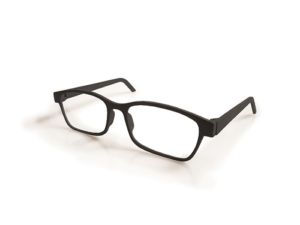 Italian company CRP Technology is introducing the latest material from its Windform P-LINE range – the glass fiber-reinforced thermoplastic polyamide Windform P2, which the company states has “excellent mechanical properties” for its High Speed Sintering (HSS) technology. The new material has high tensile strength (39.24 MPa), combined with increased stiffness (2925.20 MPa), and is great for insulating, as it is glass fiber-filled. Windform P2 is good for producing end-use parts that need high stiffness, as well as manufacturing components with detailed resolution.
Italian company CRP Technology is introducing the latest material from its Windform P-LINE range – the glass fiber-reinforced thermoplastic polyamide Windform P2, which the company states has “excellent mechanical properties” for its High Speed Sintering (HSS) technology. The new material has high tensile strength (39.24 MPa), combined with increased stiffness (2925.20 MPa), and is great for insulating, as it is glass fiber-filled. Windform P2 is good for producing end-use parts that need high stiffness, as well as manufacturing components with detailed resolution.
“Windform® P2 is the second polymer from P-LINE, the new Windform® range of materials for high speed production-grade 3D printing, introduced on the market less than a year ago,” said Engineer Franco Cevolini, CRP Technology CTO and VP.
“This is a very important property. Windform® P2 is stiffer than Windform® P1 because Windform® P2 is reinforced (Windform® P1 is not reinforced). Most of the reinforced materials for similar technologies currently on the market, show a decrease in the tensile strength property. My staff and I have been able to preserve the high tensile strength in Windform® P2. Therefore, Windform® P2 overall’s performance is superior than the performance of similar materials currently on the market for similar technologies.”
ZER Collection 3D Printing Clothes with BCN3D
Spanish fashion brand ZER Collection introduced its first collection at the most recent Mercedes Benz Fashion Week in Madrid. The label, which was founded in 2017 by Núria Costa and Ane Castro and designs ‘futuristic, functional and urban clothing with sporty aesthetics,’ incorporated 3D printed parts, made with BCN3D’s Sigma printer, into 12 of the outfits; this system allows for the printing of two different materials, including flexible TPU. ZER Collection is using 3D printing in order to accelerate its production manufacturing processes and reduce waste, while also contributing to the use of sustainable new technologies in the apparel industry.
“We work much faster, because we can print two fabrics at the same time,” Costa said when explaining some of the benefits of using 3D printing to make their clothing, including their ability to “digitize all patterns in order to produce only the necessary fabric.”
“We believe that the use of 3D printing represents a revolution in fashion, in environmental care and in society.”
Discuss these stories and other 3D printing topics at 3DPrintBoard.com or share your thoughts in the Facebook comments below.
The post 3D Printing News Briefs: January 16, 2020 appeared first on 3DPrint.com | The Voice of 3D Printing / Additive Manufacturing.
3D Printing Congress in Argentina: Novel Ideas and a Harsh Landscape Ahead
A new edition of the 3D Printing Congress in Argentina wrapped up last Thursday after two days of workshops, supplier stands and speakers talking about the challenges and solutions of manufacturing using 3D printing. From biomaterials to resins, 3D printing in the automotive industry, 3D medical simulators and biomedical inventions, some of the most innovative uses for the technology show that it is advancing in the country, albeit somewhat slower than expected.
Sergio Cavaliere, Product and Applications Manager for Advanced Machine Systems (AMS), said to 3DPrint.com: “The local market is volatile, complex and caged by controls, yet at the general manufacturing level we notice that companies have begun acquiring additive manufacturing technology, perhaps not at the hyper expectation levels we forecasted five years ago, still, they know that if they don’t begin to use 3D printing, they will lose competitiveness.”
Held 6 to 7 November in the City of Buenos Aires, the event gathered more than 3,500 3D printing enthusiasts, professionals, and researchers who eagerly discussed how to achieve better, cheaper and more efficient results, as well as what’s on the horizon for local 3D printing companies. This year’s main themes focused on 3D printing in industry and biomedicine.
Last year, when the Mercedes Benz plant in Buenos Aires was looking to improve its production line of trucks and vans, they consulted Cavaliere and AMS. The manufacturing process specialists recommended they acquire an additive manufacturing machine to accelerate production. The local branch of the German vehicle maker soon began using a Stratasys F270 24/7 and in only 23 days created the devices needed for the manufacturing engineering of the assembly line.
“In general and around the world, almost 70% of all 3D printing is used for prototyping. However, this is not the case for Argentina, where industries are searching for ways to use the technology in manufacturing aids–like jigs, fixtures, platforms and tools (mainly in automotive). This means that they require more durable materials with high thermal and impact resistant qualities. And while most machines sold locally today are PLA printers that are very common for prototyping, they are not useful in manufacturing. That’s the reason our product sparked a lot of interest among attendees at the Congress,” suggested Demian Gawianski, CCO of Kodak 3D Printing during an interview with 3DPrint.com.
Gawianski considers that 3D printing know-how has been growing in recent years, more focused on industry and engineering applications. In 2012, Argentina-based Smart International began developing and manufacturing 3D printers and in 2018 they released Kodak’s Portrait 3D printer, a new professional 3D printing solution, which was developed through a global brand licensing agreement.
Furthermore, the team behind Kodak showcased parts that are being produced as part of their new segment, an alliance with renown polymer manufacturers worldwide, such as BASF, Owens Corning, Clariant, and DSM. “The pieces printed with our machines using BASF stainless steel are very alluring for manufacturers because they have 80% stainless steel and 20% of a polymer which after a few post-processes becomes 100% stainless steel,” explained Gawianski. “Our machines are certified to work with already established materials from large manufacturers, allowing our customers to develop engineering pieces with high resistance.”
Not to be missed was Juan Manuel Romero’s talk about his Game of Thrones spoons, made earlier this year exclusively and in partnership with HBO Latin America, just in time for the premiere of the world-wide awaited sixth and final season of the show. The innovative development even competed at Cannes’ International Festival of Creativity during the 2019 award season.
“3D printing offers infinite novel possibilities for jewelry creations, characterization, and improved quality. The precision approach of the machines is an advantage to more traditional methods of creating jewelry,” said Romero to 3DPrint.com. “Back in 2014 we realized that we needed to scale production without losing the design edge, and 3D printing gave us all that and more.”
Romero, the owner of Quimbaya, has been a goldsmith jeweler for over 10 years, yet he learned quickly that using 3D printing to go from design to molding makes a big difference towards his end product. He states that “morphologically, the jewelry design has no limit, while with conventional methods, the same level of accuracy could never be achieved.” For his Game of Thrones spoons, he used Photocentric’s Precision 1.5 machines to create the prototype and the molds that were then used to make the metal spoons. The four spoons (representing the most iconic houses of the series: Stark, Lannister, Targaryen, and Greyjoy) traveled from Argentina to Europe with HBO, they became a very popular and desirable item due to the visibly unique quality, traits and intricate work.
One of the most popular booths among attendees was PrintaLot. The company director, Mariano Perez, has underlined the success of his filaments: “Our client portfolio used to be made up mainly of hobbyists, and today we mostly get industrial market orders from companies that are driving the digital transformation of the industry”. In this sense, he adds that “we began working with other markets in the region, like Brazil, which has a big demand for our products.” One of the biggest orders the company got from Brazilian clients was a request for a new PLA color, the green-blue shade made famous by jewelry maker Tiffany.
“3D printing machines and materials are changing the production processes of different economic sectors and creating new business models. We also began reselling Wiiboox Sweetin, the gourmate food 3D printer, and Ultimaker, because we noticed many local entrepreneurs were searching for this type of solutions,” Mariano told 3DPrint.com.
In addition to the increasingly popular local 3D printer suppliers exhibiting the latest MakerBot, Formlabs, BCN3Ds, and Trideo (one of the most popular local brands), new and creative applications drew big crowds. Like a surgical simulator; 3D bioprinters to treat wounds in diabetic patients; bespoke 3D printed titanium implants, and the WalkingMaker, a 3D printer with wheels that extrudes material obliquely.
Nicolas Meer, co-creator of a pediatric surgical simulator for medicine residents said: “we spoke to pediatric surgeons who suggested the best way to teach the techniques of laparoscopy to students and future doctors was through a simulator, instead of waiting for a real case or practicing with animal parts. I have been working with 3D printers since 2012 so I decided to design and print a small simulator that wouldn’t cost more than $500.”
The post 3D Printing Congress in Argentina: Novel Ideas and a Harsh Landscape Ahead appeared first on 3DPrint.com | The Voice of 3D Printing / Additive Manufacturing.

